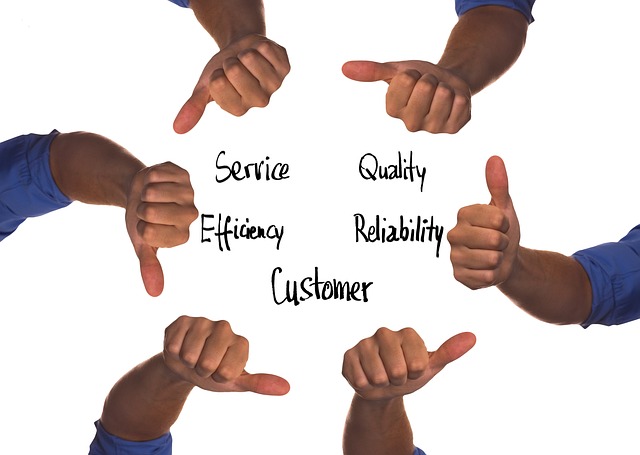The Role of Leadership in Building a High-Performance Culture
Leadership plays a pivotal role in shaping the culture of an organization. When we talk about a high-performance culture, we refer to an environment where employees are engaged, motivated, and committed to achieving the organization’s goals. A strong culture drives performance, leads to higher productivity, and fosters collaboration. In this article, we’ll explore how effective leadership influences the development and sustainability of a high-performance culture.
Understanding High-Performance Culture
The term “high-performance culture” encompasses various attributes and behaviors that boost an organization’s effectiveness. It often includes features like shared values, clear vision, mutual respect, accountability, and continuous improvement. For leaders, grasping these elements becomes essential. Why? Because a high-performance culture does not develop overnight. It evolves over time through consistent practices and strategic initiatives led by those at the top of the organization.
Additionally, a high-performance culture thrives on trust and autonomy. When employees feel secure in their roles and understand that their leaders support innovation, they tend to take more calculated risks. This shift can lead to groundbreaking ideas and solutions that set the organization apart from its competitors. A culture where failure and learning go hand in hand can only flourish in environments where leadership encourages open dialogue and feedback. Subsequently, the value of transparency cannot be overstated in this context, as it builds trust and strengthens relationships between leaders and team members.
The Characteristics of Effective Leadership
Effective leadership stands as a cornerstone to developing a high-performance culture. Several characteristics define such leaders. First and foremost, they possess strong communication skills. Leaders must articulate their vision and values clearly. They should also ensure that these principles resonate throughout the organization. When employees understand the ‘why’ behind their roles, they feel more connected and engaged in their work.
Moreover, emotional intelligence plays a crucial role. Leaders who can empathize, relate to their team members, and respond to their needs are better equipped to inspire peak performance. This quality enables them to build genuine relationships, foster collaboration, and even manage conflicts effectively—an invaluable asset in any work environment. Effective leaders are also adaptable. They recognize that as organizations evolve, so too must their leadership styles. This flexibility allows leaders to navigate change proactively, creating an atmosphere of resilience.
Setting Clear Expectations and Goals
An essential function of leadership is setting clear expectations. Without defined goals, both leaders and employees may feel adrift. A high-performance culture emerges when leadership sets specific, measurable, attainable, relevant, and time-bound (SMART) goals. These goals provide a framework that employees can rally around, creating a sense of purpose. The clarity established by strong leaders allows team members to focus their efforts on what truly matters, reducing ambiguity and enhancing productivity.
Furthermore, leaders should regularly communicate these expectations and adjust them as necessary. This ongoing dialogue fosters an environment where continuous feedback is not only welcomed but expected. Employees become more focused and aligned with the organization’s objectives when they understand how their individual roles contribute to the bigger picture. Such alignment significantly enhances performance, creating what many refer to as a “win-win” situation for both the employees and the organization.
The Importance of Recognition and Feedback
Recognizing and celebrating achievements is another critical responsibility of leaders in establishing a high-performance culture. Recognition can take many forms, from formal awards to simple, genuine acknowledgment in team meetings. When leaders celebrate successes, they fuel employees’ motivation and reinforce the behaviors that drive performance. This recognition acts as a catalyst for a positive feedback loop: recognized employees feel valued, which in turn promotes further engagement and commitment.
Feedback is equally essential. Effective leaders create spaces where constructive feedback is not merely tolerated but encouraged. This can often lead to innovations and breakthroughs that drive the organization forward. Regular check-ins and performance reviews help create a culture of accountability. Employees must understand that feedback is a tool for growth, not a means of criticism. Such perceptions of feedback can revolutionize how teams operate and improve overall performance.
Fostering Collaboration and Teamwork
High-performance cultures thrive on collaboration and teamwork. Leaders must promote these values through actions that emphasize the importance of working together. By encouraging cross-functional teams, leaders can dismantle silos that hinder communication and inhibit innovation. Building teams that mix diverse perspectives enhances problem-solving capabilities and accelerates project outcomes.
Moreover, when leaders model collaboration by actively engaging in team projects, they demonstrate that collective success is valued over individual achievement. This leadership approach sets the tone for a culture where collaboration flourishes. Through shared successes, team members develop trust in one another, further enhancing their collective performance. Creating opportunities for teamwork through team retreats, brainstorming sessions, or even casual social gatherings can dramatically elevate a workplace culture of high performance.
Providing Learning and Development Opportunities
One critical aspect that sets high-performance cultures apart is the emphasis placed on learning and development. Leaders must take the initiative to foster a growth mindset within their teams. Offering training programs, workshops, mentorship opportunities, and even access to online learning platforms enables employees to enhance their skills continually. This commitment to personal and professional growth not only benefits individual employees but also elevates the organization’s overall performance.
Additionally, fostering a culture of continuous improvement encourages employees to take ownership of their personal development. Leaders can set aside time during team meetings to discuss available resources or introduce new areas for learning. By creating a structured yet flexible approach to professional development, leaders can inspire employees to pursue new challenges and enhance their skill sets. This proactive approach positions organizations to adapt to emerging market trends, ensuring they stay competitive and relevant in their industry.
The Impact of Leadership on Employee Well-Being
Lastly, leadership must not overlook the significance of employee well-being. A high-performance culture is not solely about achieving targets; it equally embraces the health and happiness of employees. Effective leaders understand that they set the example for work-life balance. When leaders prioritize mental health and well-being initiatives, employees feel more valued and cared for.
Leaders can promote employee well-being by introducing flexible work hours, providing mental health days, and encouraging vacations. Acknowledging the importance of downtime helps prevent burnout and enhances overall productivity. Supporting employee well-being fosters a more engaged, loyal workforce that contributes to a sustainable high-performance culture. When employees believe their leaders genuinely care about their well-being, they become more dedicated to the organization’s success.
Conclusion
While we examined various elements of leadership’s role in building a high-performance culture, the essence remains clear. Effective leaders play a crucial role in setting expectations, recognizing achievements, fostering collaboration, and enhancing employee well-being. They craft an environment that encourages continuous learning and promotes organizational objectives. In today’s fast-paced world, the characteristic of adaptability becomes vital for leaders who seek to create sustainable high-performance cultures.
FAQs
- 1. What is a high-performance culture?
- A high-performance culture is an organizational environment where employees are highly engaged, motivated, and focused on achieving the company’s goals. It encourages collaboration, continuous improvement, and accountability among team members.
- 2. How do leaders influence workplace culture?
- Leaders shape workplace culture by setting clear expectations, demonstrating values through their actions, providing support and recognition, and fostering open communication and collaboration within teams.
- 3. What characteristics define effective leadership?
- Effective leadership is characterized by strong communication skills, emotional intelligence, adaptability, and the ability to inspire and motivate employees toward a common goal.
- 4. Why is employee recognition important?
- Employee recognition boosts morale and motivation, reinforces positive behaviors, and promotes a sense of belonging and commitment to the organization’s success.
- 5. How can leaders promote employee well-being?
- Leaders can promote employee well-being by prioritizing work-life balance, offering mental health resources, encouraging breaks and vacations, and fostering an overall supportive workplace culture.



